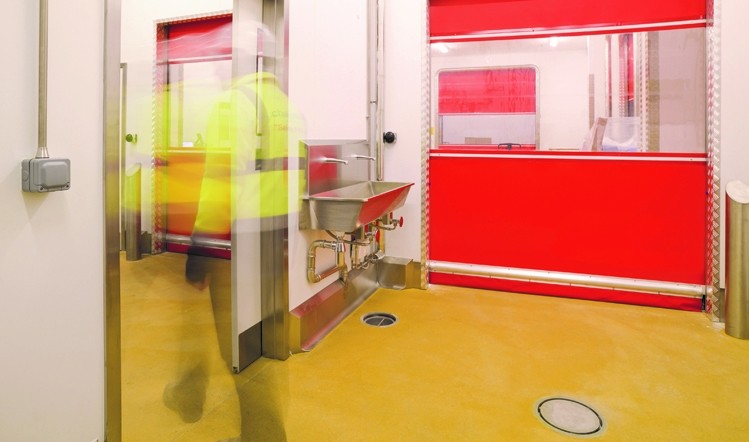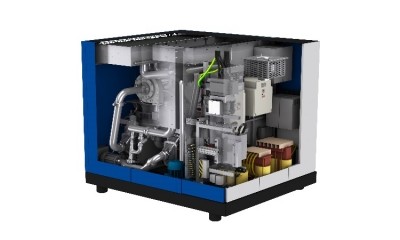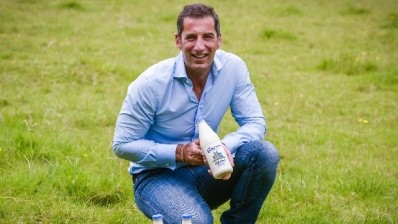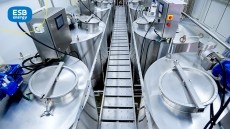Live site construction – minimising the risks

Whether because of ingredient price inflation, pressure from the discount retailers or from other brands, more food and drink manufacturers are struggling to stay competitive and are looking at every option for bringing down the cost of manufacturing. That includes consolidation and rationalisation across different sites.
This, at least, is the experience of Lorien Engineering Solutions. Operations director Bill Treddenick says: “Over the last couple of years, we’ve been seeing a trend for multi-site companies, often multinationals, to look at their overall manufacturing network and decide which geographical areas are more effective for them to operate in.”
This type of consolidation will often involve factory closures, but other production centres will need to be adapted or expanded. “Manufacturing volumes tend to go up, but they are being produced more intensively and more efficiently,” he explains.
Single-site operations may be facing similar challenges, wanting to sweat their assets rather than migrate to a new, greenfield site.
They may be extending the existing site sideways, upwards, converting warehouse space or fitting in a mezzanine, but this kind of live-site construction will always have the potential for major disruption and risk.
Brownfield versus new-build (back to top)
Of course, there will always be well-capitalised businesses that are able to expand onto a completely new site.
While brownfield development has always accounted for 90%-plus of Lorien’s UK food and drink construction, Chalcroft has seen a rebalancing in the opposite direction over the past two years or so.
Chairman of Chalcroft Holdings Mark Reeve says: “Only a few years ago, around 25% of our projects in food and drink used to be new-build. Now it’s much closer to a 50:50 split between new-build and extensions to existing facilities.”
As any insurer will tell you, the risks associated with new-build are likely to be significantly lower than for on-site projects in working factories.
But at RSA Insurance, deputy director for global consulting Martin Turner points out that, even where there is no change to the fabric of the building, other activities such as non-routine maintenance, refurbishments and line installations can create challenges of their own.
The drive to automate typically plays a prominent role here, whether in production or warehousing. “Even in a warehouse, these can be huge projects to introduce automated storage and retrieval, for example, and install high, narrow-aisle racking,” he says.
According to Turner, food industry operational risk management in general, and risks and hazards associated with live-factory construction in particular, are focused on four areas: food quality and safety; people; assets; and continuity of production.
In case all of this sounds too vague, he provides a telling example of just how risk can mount up in the context of live-site building projects, and pose a direct threat to company assets.
“When it comes to fire, on-site work means you have an increase in fire inception hazards such as welding and other hot work,” he says.
“You are probably increasing the fire load with everything you are bringing onto the site. At the same time, you may have impaired or removed some or all of the fire protection systems, such as sprinklers. All of this can create the perfect storm.”
For any manufacturer, one of the key areas of concern from Turner’s list will be continuity of production. Operations director at Chalcroft Andy Hardy says: “Some clients will want to build a factory extension with new machinery to take over, but will try to ensure they can keep the production flow going almost continuously.”
Minimising disruption (back to top)
If a manufacturer is going to minimise disruption, careful pre-planning is essential, he says. The starting point has to be a clear sense of the client’s priorities: high-care requirements, the maximum shutdown times available, and so on.
Chalcroft’s Reeve takes up the theme of preparation: “It tends to be a highly-planned, logistically-challenging process involving production management, traffic management, neighbourhood issues and the management of existing utilities.
“The length of the planning process will depend on the nature of the work, but it might take 10-to-12 weeks in order to land on-site and stand a good chance of finishing the work on schedule. In the end, production is king, and dictates everything.”
In terms of isolating the construction area from production and other working zones of the factory, Chalcroft explains that smaller gaps would typically be closed by a temporary partition of the same quality as a permanent wall.
Larger expanses might be sealed by heavy-duty plastics joined to a scaffold. Another weapon in the live-site construction armoury is phasing. “This depends on the client’s perspective,” says Reeve.
While RSA emphasises the options for automating warehouses, many manufacturers are working at a more basic level simply to keep their warehousing operational.
With factories often running around the clock and throughout the year, phased construction can be just as important in this setting as it is in production areas, says ground engineering specialist Uretek.
The company recently worked to stabilise the warehouse floor in a wine-bottling operation. The floor was sinking, and the company risked having to relocate to a completely new site.
“Since it was a 24-hour operation, we had to minimise disruption by going in aisle-by-aisle over dozens of aisles,” says marketing director Aleister Willis.
“We designed a purpose-built trolley to take all our equipment in, and used dust-free drilling before injecting the geopolymer material to provide stability.”
Cross-site consolidation (back to top)
With the much larger-scale cross-site consolidation projects that Lorien describes, even where existing production is able to function alongside the site expansion, those involved will be under pressure to speed it up.
“With a rationalisation process, there is a net saving for the owner in being able to close the donor site,” Treddenick explains. “This may save millions of pounds per month in costs.”
In one current project, the customer challenged Lorien to cut the original window of 16 months to just nine months. It is currently due to be completed on time, according to the new schedule.
But how can this type of compression be possible, without cutting corners in terms of quality or safety? Under normal circumstances, just the tendering and negotiating process to select suppliers can take two or three months.
“Instead, we can start work at an early stage with nominated suppliers, working to strict performance specifications,” says Treddenick.
Of course, talk of cutting corners is anathema to anyone involved in factory design and construction. Treddenick maintains there is a close fit between best practice in health-and-safety and overall efficiency.
“And if there is a health-and-safety issue, this can have a major impact on schedules,” he warns. “We work very closely with our contractors to drive common standards in this area.”
RSA reinforces this emphasis on established standards and processes. “Successful manufacturers have the right people, the right controls and arrangements in the right place at the right time,” says Turner.
“Less successful companies see this type of situation as an exception where normal procedures can be made more lax. In fact, of course, you’re managing a higher risk. So that’s precisely the time when those procedures should be coming into play, rather than being sidelined.”
CDM Regulations (back to top)
Regulation also has its part to play. The Construction (Design and Management) Regulations (CDM), revamped in 2015, might at first glance be construed as something of relevance only to the construction industry.
In fact, says Turner, its applicability is much wider than this, both in the sense that it assigns duties to all parties involved in a project, and in terms of the scale and nature of those projects.
“Food manufacturers frequently carry out operations that come under the CDM, whether it’s installing new machinery, moving existing machinery, decommissioning machinery – or simply removing a partition wall,” he says.
“The regulations provide quite a good framework in which to manage risk, with regard to defining roles, carrying out risk assessments, ensuring that whatever has been installed is compliant, and so on.”
Smaller businesses may not have the right people in place to plan and manage projects of this kind. But outside expertise is available, whether in the form of insurance consultants or design-and-build partners.
So, while manufacturers cannot exactly hang up a ‘Do not disturb’ sign between the building site and their production areas, they should at least be able to keep any impact to a minimum.



















